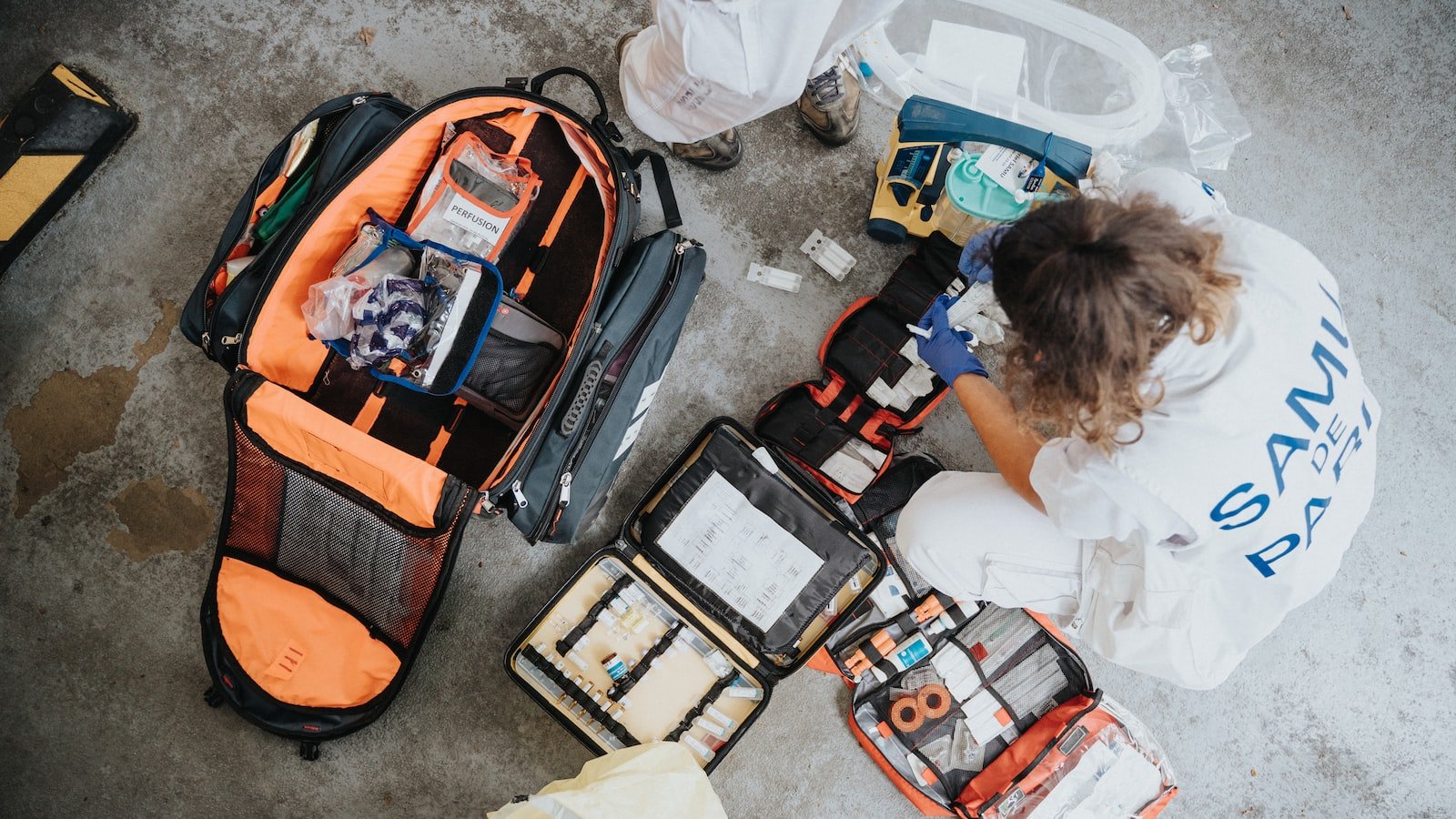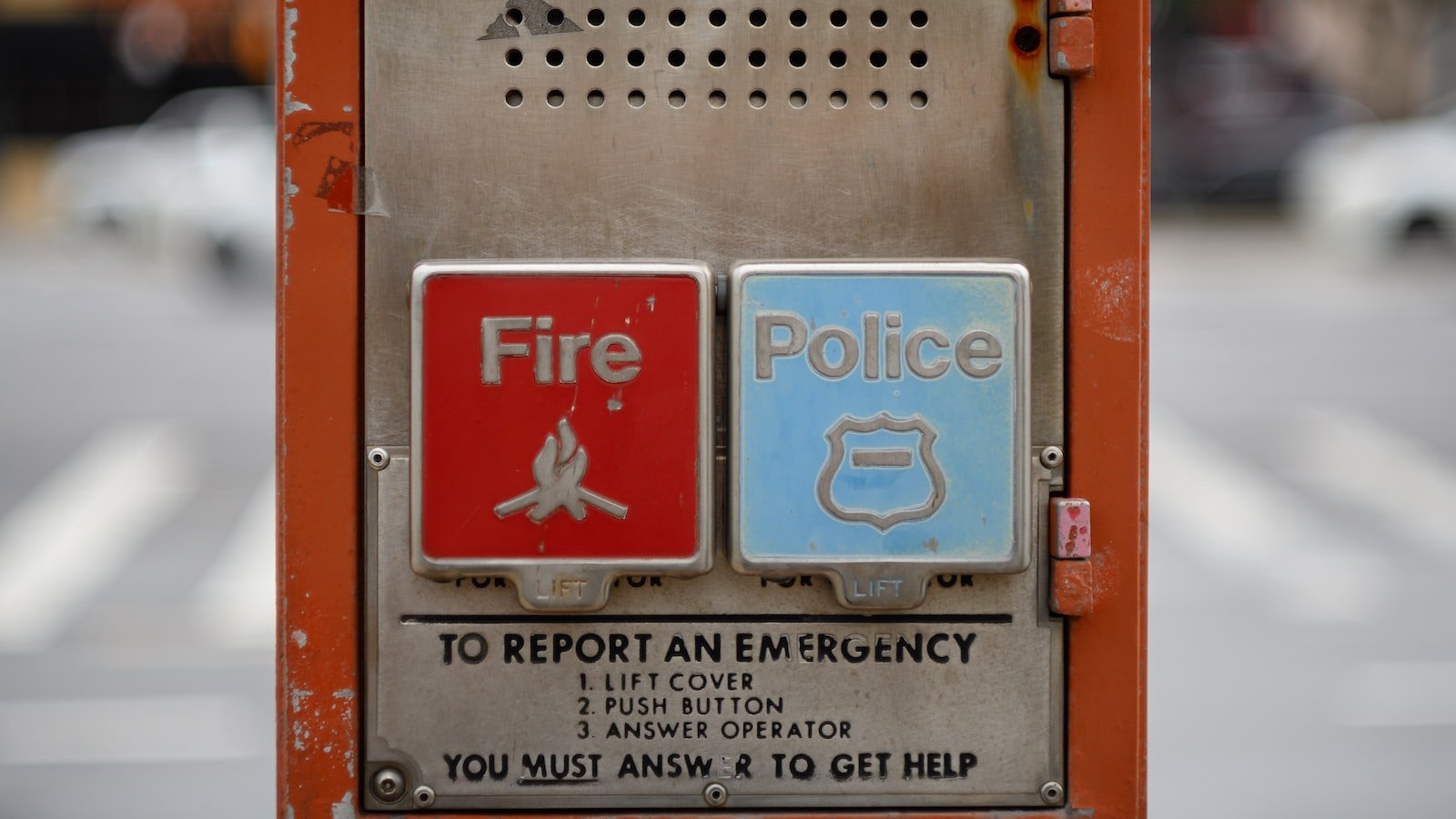Now Reading: Preparing Your Pets for an Emergency: A Complete Guide
-
01
Preparing Your Pets for an Emergency: A Complete Guide

Preparing Your Pets for an Emergency: A Complete Guide
In the blink of an eye, our lives can be turned upside down by unexpected emergencies. Fires, floods, earthquakes, and other unforeseen events can test our resilience and challenge our preparedness. Amidst the chaos and panic, it is easy to overlook the well-being of our beloved pets, those loyal companions who rely on us in times of need. To ensure their safety and help them endure any crisis that comes our way, a comprehensive plan must be put in place. In this complete guide, we will navigate the labyrinth of pet preparedness, exploring every aspect from emergency kits and evacuation strategies to calming techniques and post-disaster recovery. So, let’s embark on this vital journey together, to equip ourselves with the knowledge and tools necessary to protect our furry family members when it matters most.
Table of Contents
- Assessing Potential Risks in Your Area
- Creating an Emergency Kit for Your Pets
- Developing an Evacuation Plan for Your Pets
- Preparing your Pets for Temporary Sheltering
- Communicating with Authorities and Veterinarians during an Emergency
- Q&A
- The Conclusion

Assessing Potential Risks in Your Area
When it comes to the safety and well-being of your community, it’s crucial to be proactive and informed about potential risks that may affect your area. Understanding the potential hazards in your environment can help you develop effective strategies for preparedness and minimize the impact of unforeseen events. Here are a few steps to assess potential risks in your area:
- Research local historical data: Start by researching the historical data of your area, including natural disasters, health concerns, crime rates, and any specific risks associated with your region. This information will provide valuable insights into the type and frequency of risks that have occurred in the past.
- Conduct a thorough vulnerability assessment: Analyze your community’s infrastructure, including buildings, roads, and critical facilities, to identify areas that may be vulnerable during a disaster. This assessment will help you pinpoint potential weak points and prioritize risk mitigation efforts.
- Consult with local authorities: Reach out to local authorities, government agencies, and emergency services to gather additional information on potential risks specific to your area. They can provide real-time data, guidelines, and resources that are tailored to your community’s needs.
By taking these proactive steps, you can gain a better understanding of the potential risks that could impact your community and develop a comprehensive plan to enhance preparedness and response. Remember, staying informed and fostering a collaborative approach among community members are essential in building resilience and safeguarding against potential risks.

Creating an Emergency Kit for Your Pets
Preparing Your Furry Friends for the Unexpected
During emergencies or natural disasters, it’s crucial to have a well-stocked emergency kit for your four-legged family members. Just like humans, pets also require essential supplies to ensure their safety and well-being in challenging times. Below are some important items to consider including in your pet’s emergency kit:
- Food and Water: Pack enough food and water to last your pet for at least three days. Ensure you include any necessary bowls and can openers if needed.
- Medications and Medical Records: Keep a supply of any medications your pet may need, along with a copy of their medical records. Don’t forget to include any prescriptions or specific instructions.
- Comfort Items: Include familiar comfort items like blankets, toys, or bedding to help reduce anxiety and provide a sense of security for your pet during stressful situations.
- Leashes, Collars, and ID Tags: Have an extra leash and collar, preferably with identification tags, in case your pet’s current ones get damaged or lost.
- Sanitation Supplies: Pack plastic bags, litter boxes, and litter for your pets’ waste disposal needs. Also, keep some pet-friendly cleaning wipes or solution to maintain cleanliness.
- First Aid Kit: Ensure you have a basic first aid kit specifically for your pets, including items such as bandages, antiseptic solution, and any necessary wound-care supplies.
- Recent Photo and Contact Information: Keep a recent photograph of your pet along with their identification details and your contact information. This can be crucial for reuniting with your pet in case they become lost.
By assembling a comprehensive emergency kit, you can be better prepared to face unexpected situations with your beloved pets. Remember to periodically check and update the supplies in your kit to ensure everything remains fresh and functional. Your furry friends will thank you for your foresight and care!
Developing an Evacuation Plan for Your Pets
When it comes to emergency situations, it’s crucial to have a well-thought-out evacuation plan that includes your furry companions. Pets are part of our family, and their safety should be a top priority. Here are some tips to help you develop an effective evacuation plan for your beloved pets:
- Identification: Ensuring your pets are properly identified is essential for their safety during an evacuation. Make sure they wear collars with up-to-date ID tags, including your contact information. Microchipping your pets is also a great idea as it provides an additional layer of identification.
- Pack an Emergency Kit: Prepare a pet-specific emergency kit that includes their essentials. This should include food, water, medications, medical records, a leash, a carrier, and comfort items such as blankets or toys. Keep this kit easily accessible so you can quickly grab it before evacuating.
- Find Pet-Friendly Accommodations: Research and identify pet-friendly accommodations in advance, such as hotels, shelters, or friends’ and family’s homes. Many emergency shelters do not allow pets, so having alternatives lined up will ensure your pets have a safe place to stay during an evacuation.
- Practice Evacuation Procedures: Just like fire drills, it’s important to practice evacuation procedures with your pets. This will help them become familiar with the process and reduce anxiety in case of a real emergency. Train them to follow commands and secure their carriers or leashes swiftly.
- Stay Informed: Stay updated with local emergency alerts and evacuation orders. Follow your community’s guidelines and be aware of designated pet-friendly evacuation routes or special arrangements during emergencies. Planning ahead and staying informed will help you make the best decisions for your pets’ safety.
Remember, our pets rely on us for their well-being, especially in times of crisis. By developing a comprehensive evacuation plan, you can ensure that their needs are met and their safety is prioritized during any unforeseen events.
Preparing your Pets for Temporary Sheltering
When it comes to preparing your beloved pets for temporary sheltering, there are a few important steps to keep in mind. By following these guidelines, you can ensure that your furry friends remain safe, comfortable, and stress-free during their time in shelter.
1. Pack an essentials kit: It’s crucial to have a dedicated kit for your pet that includes all their necessary supplies. This should include food and water bowls, a leash and collar, any medications they may need, their favorite toys or blankets for comfort, and a recent photograph of your pet for identification purposes.
2. Update identification: Prior to sending your pet to temporary shelter, make sure their identification tags are up to date with your current contact information. Additionally, consider microchipping your pet if you haven’t done so already. This simple step can greatly increase the chances of a happy reunion if you and your pet become separated.
3. Create a routine: Animals thrive on routine, so try to maintain their regular feeding, exercise, and sleeping patterns as much as possible. This will help minimize their stress levels during their time in shelter. If allowed, bring their familiar bedding or blankets from home to provide a sense of comfort and familiarity. And don’t forget to include a note with any special instructions regarding your pet’s behavior or medical needs.
Communicating with Authorities and Veterinarians during an Emergency
During an emergency, effective communication with authorities and veterinarians is vital to ensure the safety and wellbeing of both humans and animals. To facilitate a seamless exchange of information, here are some key points to consider:
1. **Stay calm and gather necessary information**: In an emergency situation, it’s crucial to remain calm and focused. Take a moment to gather important details such as your location, the nature of the emergency, and the number of animals involved.
2. **Contact the relevant authorities**: Depending on the urgency and nature of the situation, reach out to the appropriate authorities for guidance and assistance. This could include emergency services, local animal control agencies, or veterinary hospitals. When making the call, clearly state the nature of the emergency and provide all available details.
3. **Follow instructions and provide clear updates**: Once you have established communication with the authorities or veterinarians, it is important to follow their instructions promptly and efficiently. Provide any additional information they might request, such as the condition of the animals, any injuries observed, or potential hazards in the vicinity. Clear and concise updates will aid them in making informed decisions and taking necessary actions.
Remember, effective communication during emergencies is crucial for the safety and welfare of all involved. Stay prepared and be proactive in relaying accurate and important information to authorities and veterinarians to ensure a swift and efficient response.
Q&A
### How can I best prepare my pets for an emergency situation?
Preparing your pets for an emergency involves creating a disaster kit with essential items like food, water, medication, and comfort items. Keep important documents and records handy, have a safe place for your pet to take shelter, and ensure they are wearing identification tags. Practice emergency drills to familiarize them with the process.
### What should I include in a pet disaster kit?
A pet disaster kit should contain enough food and water for at least a week, along with bowls, medications, a first aid kit, blankets, litter, and a leash or carrier. Keep a copy of your pet’s medical records, vaccination history, and a recent photo in case they become lost. Don’t forget to add some familiar toys or comfort items to reduce stress.
### How can I create a safe space for my pets during an emergency?
Designate a specific area in your home as a safe space for your pets. Keep it comfortable and secure, free from hazards like open windows, toxic plants, or loose wires. Prepare this space with their bedding and favorite toys, making it a familiar and calming environment for them during times of stress.
### What steps should I take to ensure my pets are easily identifiable during an emergency?
Ensure your pets wear proper identification with their name and your contact details. Consider microchipping them to increase the chance of a reunion if they get lost. It’s essential to regularly update the contact information associated with the microchip.
### Are there any specific evacuation tips for pets?
If you need to evacuate, bring your pets with you. Make sure they are wearing collars or harnesses with ID tags and have a leash or carrier ready. Familiarize yourself with pet-friendly places to stay in case of evacuation, and never leave your pets behind during a disaster.
The Conclusion
As we conclude this definitive guide on preparing your pets for an emergency, we hope that you have gained valuable insights and practical tips to ensure the safety and well-being of your furry companions during uncertain times. Remember, our pets rely on us for their protection, so taking the necessary steps to prepare for emergencies is a responsibility we must embrace wholeheartedly.
Through this article, we have explored the importance of creating an emergency plan tailored to your pet’s specific needs. From assembling a comprehensive emergency kit to identifying pet-friendly accommodations, we have covered every aspect required to keep our four-legged friends out of harm’s way.
Just as we safeguard our homes against unforeseen events, we must extend that protection to our beloved pets. By establishing a network of trusted individuals, such as neighbors, friends, or even local pet-friendly shelters, we can find solace in knowing that our pets will be in safe hands when we are unable to care for them.
Remember, emergencies come without warning. By familiarizing yourself with potential risks and staying proactive, you will be better positioned to respond swiftly and decisively when the need arises. Maintaining up-to-date vaccination records, microchipping your pets, and having a trusted veterinarian on hand are all critical elements in ensuring their safety and well-being.
Lastly, as we navigate the uncertainties of life, let us not overlook the emotional impact emergencies can have on our pets. Offering them comfort, patience, and reassurance will go a long way in easing their stress during such challenging times.
In conclusion, the journey to preparing your pets for an emergency may seem daunting at first, but by following the practical advice and expert guidance shared here, you are equipped with the knowledge to ensure your pets’ safety in the face of adversity. Embrace this commitment, become your pet’s greatest advocate, and rest assured that you have taken every necessary step to protect your furry family members when it matters most.
Remember, when disaster strikes, our pets look to us for guidance and protection. Let us never underestimate the immeasurable bond that exists between us and our furry companions. With adequate preparation and an unwavering commitment to their well-being, we can face any emergency with confidence, knowing our pets will be by our side, safe and unharmed.
As an affiliate, my content may feature links to products I personally use and recommend. By taking action, like subscribing or making a purchase, you’ll be supporting my work and fueling my taco cravings at the same time. Win-win, right?
Want to read more? Check out our Affiliate Disclosure page.





